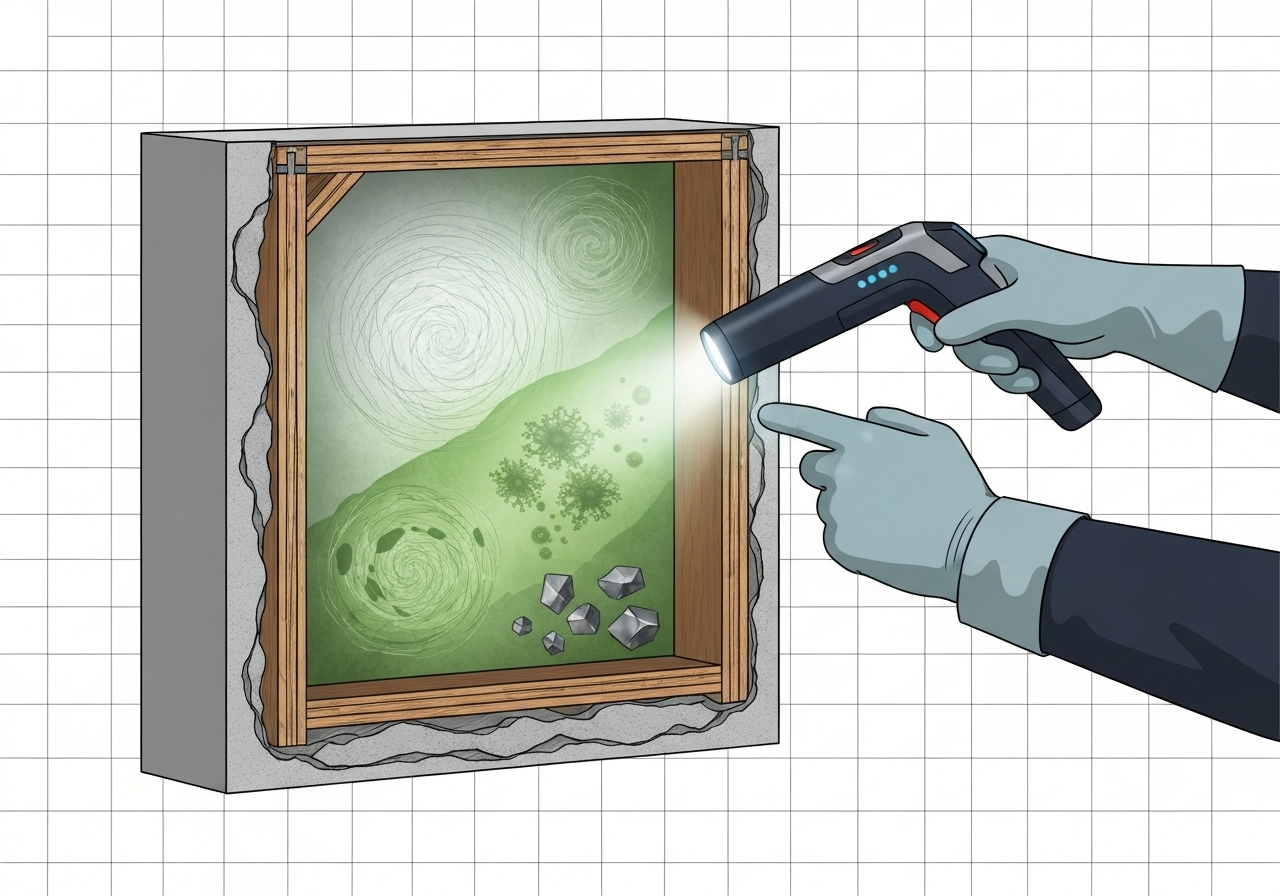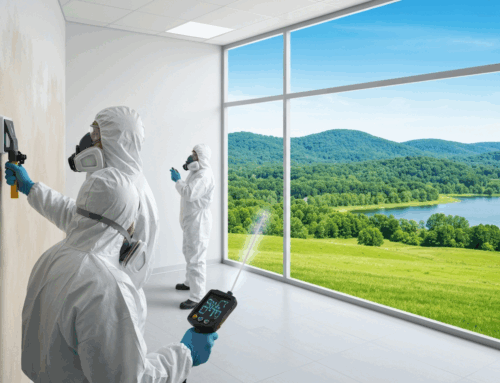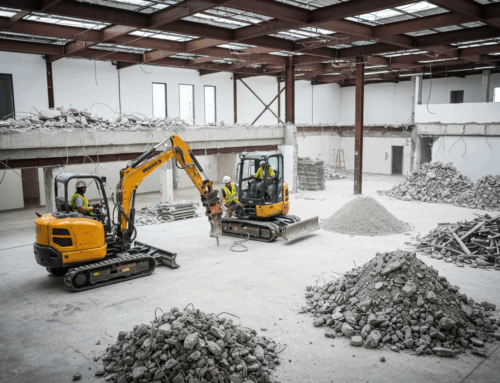Introduction: Mastering Your Property’s Safety and Compliance
Ensuring the safety and long-term value of your property begins with understanding its hidden risks. A comprehensive hazardous building materials assessment is not merely a precautionary measure but a critical step toward safeguarding health, ensuring legal compliance, and protecting your investment. North Carolina’s diverse architectural landscape means many properties, particularly older ones, may harbor materials that were once common but are now known health hazards. Ignoring these unseen dangers can lead to severe health consequences, costly legal issues, and significant remediation challenges. Partnering with seasoned professionals like Piedmont Quality Air allows you to navigate this complex terrain with confidence, ensuring your property adheres to all federal, state, and local regulations.
What is a Hazardous Building Materials Assessment?
A hazardous building materials assessment is a systematic process designed to identify, locate, and quantify potentially harmful substances within a structure. This assessment typically involves a thorough visual inspection, strategic sampling of suspect materials, and subsequent laboratory analysis. The primary goal is to determine the presence, condition, and potential for disturbance of materials like asbestos, lead, and polychlorinated biphenyls (PCBs) before they pose a risk. Such an assessment is crucial prior to any renovation, demolition, or property transfer, as disturbing these materials without proper precautions can release toxic fibers and chemicals into the environment, endangering occupants and workers alike. Entrusting this critical task to a qualified consultant is essential for accurate identification and effective planning, ensuring that abatement or management strategies are appropriate and compliant with regulations, as detailed in reports concerning hazardous building materials.
Identifying Common Hazardous Materials in North Carolina Buildings
North Carolina properties, especially those constructed before the 1980s, may contain a variety of hazardous materials that require a professional hazardous building materials assessment. Understanding these common culprits is the first step toward effective management:
- Asbestos: Once prized for its fire-resistant and insulating properties, asbestos can be found in floor and ceiling tiles, insulation, roofing materials, and pipe wraps. When disturbed, its microscopic fibers can become airborne and cause severe respiratory diseases, including lung cancer and mesothelioma, which manifest years after exposure. Piedmont Quality Air offers expert asbestos removal services to safely address these risks.
- Lead: Commonly found in older oil-based paints, plumbing pipes, and solder, lead is highly toxic, particularly to children. Exposure can lead to developmental problems, nerve damage, and other serious health issues.
- Polychlorinated Biphenyls (PCBs): Used in fluorescent light ballasts, electrical transformers, and some sealants before being banned in 1979, PCBs can leach into the air and accumulate, posing cancer risks and other health problems.
- Formaldehyde: A colorless, pungent-smelling gas found in pressed wood products (like particleboard and medium-density fiberboard), insulation, and some fabrics. It is a known respiratory irritant and carcinogen, with higher concentrations often found in newer homes due to off-gassing.
- Chromated Copper Arsenic (CCA): This pesticide was used to treat wood for outdoor applications until 2003. Arsenic is a known carcinogen, and exposure can occur through skin contact or ingestion, as discussed in detail regarding potential chemicals found in building materials.
- Volatile Organic Compounds (VOCs): A broad category including chemicals found in paints, solvents, and adhesives. High levels of VOCs can cause various health issues, from headaches and nausea to liver and kidney damage. Choosing low- or no-VOC products and ensuring proper ventilation can mitigate these risks, as advised in ways to avoid toxic building products.
The Critical Importance of a Professional Hazardous Building Materials Assessment
The stakes involved with hazardous building materials are too high for guesswork. A professional **hazardous building materials assessment** is not just a best practice; it’s a critical investment in health, legal compliance, and financial stability. These assessments serve several vital purposes:
Protecting Health and Safety
Hazardous materials like asbestos and lead pose severe, long-term health risks that can manifest decades after exposure. Professional assessment identifies these dangers before they are disturbed, preventing the release of toxic substances into the air and water, safeguarding workers, occupants, and the surrounding community. This proactive approach is the cornerstone of public health protection in construction and renovation.
Ensuring Legal and Regulatory Compliance
North Carolina has stringent regulations governing hazardous materials, mirroring federal standards like the EPA’s National Emission Standards for Hazardous Air Pollutants (NESHAP) and OSHA workplace safety requirements. For instance, asbestos removal projects require specific accreditation and permitting processes, and non-compliance can lead to substantial fines and legal action. The North Carolina Fire Prevention Code also outlines comprehensive provisions for handling hazardous materials, requiring management plans and proper procedures. A professional assessment ensures your project adheres to these complex legal frameworks, mitigating potential liabilities.
Preventing Costly Remediation
Undiscovered hazardous materials can halt a construction project, leading to unexpected delays and exorbitant emergency remediation costs. Identifying and planning for these materials upfront allows for controlled, efficient, and cost-effective abatement or management. As noted by industry experts, “The most convincing evidence for credibility in asbestos management is a perfect safety record achieved through unwavering adherence to established protocols and regulations. It’s not just about what you do, but how meticulously you do it, ensuring every fiber is contained.” This ethos is at the core of effective hazardous materials management, as emphasized in understanding North Carolina asbestos rules.
Expert Insight for Authority
Professionals bring invaluable expertise in identifying obscure hazards, understanding complex material interactions, and navigating the nuances of state and local regulations. Their training in sampling techniques, laboratory analysis interpretation, and safe work practices provides an authoritative foundation for any project involving hazardous materials. For instance, compliance with North Carolina OSHA standards for asbestos is paramount for worker safety and requires specialized training and competent person supervision.
Piedmont Quality Air’s Process for Expert Assessment and Remediation
At Piedmont Quality Air, we understand the critical nature of a hazardous building materials assessment. Our process is designed to provide comprehensive, compliant, and safe solutions for property owners across North Carolina. With over a decade of experience, our certified and licensed team adheres to the most rigorous federal, state, and local regulations.
Our approach includes:
- Initial Consultation and Site Visit: We begin by discussing your concerns, understanding the property’s history, and conducting a thorough visual inspection to identify suspect materials and potential areas of concern. This is crucial for planning any asbestos abatement or demolition services.
- Targeted Sampling and Laboratory Analysis: If suspect materials are identified, our trained professionals carefully collect samples with minimal disturbance. These samples are then sent to accredited laboratories for precise identification and quantification of hazardous substances.
- Detailed Assessment Report: Following lab results, we provide a comprehensive report outlining the types of hazardous materials present, their condition, potential risks, and recommended actions, whether it’s encapsulation, removal, or ongoing management.
- Strategic Remediation Planning: Based on the assessment, we develop a tailored remediation plan that prioritizes safety and compliance. This plan clearly outlines containment strategies, removal methodologies (like wet removal techniques and HEPA-filtered vacuums), air monitoring protocols, and disposal procedures. Our expertise extends to complex scenarios, such as North Carolina asbestos storm damage cleanup, where rapid and precise action is paramount.
- Safe and Efficient Execution: Our certified technicians execute the remediation plan using specialized equipment and strict safety protocols. This includes establishing negative air pressure, sealing off work areas, and wearing appropriate personal protective equipment to prevent cross-contamination and ensure the safety of all individuals.
- Post-Remediation Clearance Testing: After abatement, independent third-party air monitoring is conducted to confirm that airborne hazardous material levels are below regulatory limits, ensuring the area is safe for re-occupancy.
- Proper Disposal and Documentation: All hazardous waste is meticulously packaged, labeled, and transported to licensed disposal facilities in accordance with all regulations. Detailed records of the entire process are maintained for compliance and future reference. Our commitment to transparent and thorough work underscores our reputation as trusted professionals, as highlighted on our About Us page.
Securing a Safer Future: Your Next Steps with Piedmont Quality Air
The presence of hazardous building materials in your property is a serious concern that demands prompt and professional attention. A proactive hazardous building materials assessment is essential not just for immediate safety, but for long-term peace of mind and financial prudence. By accurately identifying and addressing these risks, you safeguard the health of occupants, ensure strict adherence to North Carolina’s complex regulatory landscape, and protect your property’s value.
Don’t let uncertainty compromise your well-being or your investment. Take the decisive step toward a safer, healthier environment by consulting with experts. Piedmont Quality Air stands ready to provide the comprehensive assessment and remediation services you need, ensuring every detail is handled with unparalleled expertise and care. Our commitment to your safety and satisfaction is our highest priority.
For further assistance or to schedule a professional assessment, you can find our details on the Piedmont Quality Air contact us page.
Ready to ensure your property is safe from hazardous materials? Contact Piedmont Quality Air today for a professional assessment.






